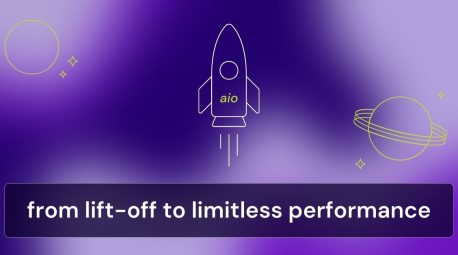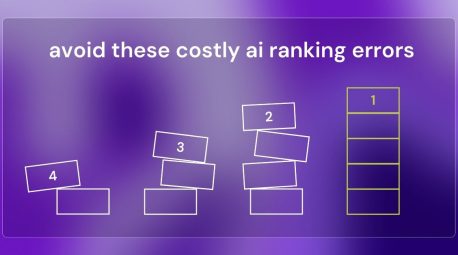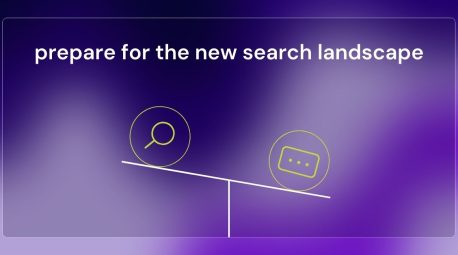Answer Engine Optimization (AEO): How to Become the Answer in AI Results

AI-powered search is changing how users discover answers online. Instead of scrolling through pages of links, they often see a single, AI-generated answer that summarizes the best sources. Answer Engine Optimization (AEO) ensures your brand is one of those cited sources.
AEO is about more than keywords — it’s about crafting content that AI models can understand, trust, and reference. This guide explains how to structure your content, build authority, and become the definitive answer your audience is looking for.
Why AEO is Critical for Modern Search
Users now expect quick, accurate answers to complex queries. AI-generated responses pull information from multiple sources to provide concise summaries. If your content isn’t optimized for AI understanding, it will likely be left out.
AEO ensures your brand is visible where users are searching and positions you as the authoritative answer. This is particularly important for decision-making queries in industries like healthcare, travel, finance, and professional services. Without AEO, even highly-ranked traditional SEO content may go uncited in AI answers.
Core AEO Strategies
1. Conduct Comprehensive Query Research
The first step in AEO is understanding which questions your audience is asking and how AI interprets them. Traditional keyword research is only part of the equation.
Use tools like ChatGPT, Perplexity, and Google AI Overviews to identify the most common phrasing for questions related to your industry. Analyze the AI responses to see what types of sources, data points, and structures are being cited. Use these insights to craft your content so that it aligns with the AI’s preferred answer formats.
2. Optimize Content Structure for AI Parsing
AI engines rely on clear, scannable structures to extract information efficiently. This means creating content that is easy for both humans and algorithms to read.
Use H2 and H3 headings to break topics into discrete sections. Include FAQ sections with concise answers that directly address common questions. Add lists, tables, and bullet points to provide structured data that AI can quickly reference. Proper structure improves your chances of being pulled into featured answers and reduces ambiguity for AI models.
3. Build Trust & Authoritativeness
AI engines cite sources they deem credible and authoritative. Building trust requires demonstrating expertise and maintaining transparency.
Publish original research, data, and case studies that provide unique value. Ensure your content has clear author credentials and links to authoritative references. Acquire high-quality backlinks from industry-specific publications. By establishing both human and AI credibility, you increase the likelihood of being cited in answers across platforms.
4. Use Semantic Optimization & Entity Recognition
AEO relies on semantic understanding — the AI’s ability to recognize relationships between concepts, entities, and facts.
Identify key entities in your industry (brands, products, services, locations) and ensure they’re consistently referenced throughout your content. Use schema markup to signal structured data for AI engines. Semantic consistency helps AI understand the context of your content and increases your chance of being pulled as the correct answer.
5. Monitor Performance & Iterate
AI platforms evolve quickly, so continuous monitoring is essential. Tracking where your content appears in AI-generated answers allows you to identify gaps and opportunities for improvement.
Set up a dashboard to monitor AI citations, track which queries yield your brand, and analyze competitors that are being cited instead. Use these insights to update content, adjust structure, and refine entity signals. Iterative improvement ensures your AEO strategy remains effective as AI algorithms advance.
Final Takeaway
Answer Engine Optimization is no longer optional — it’s essential for brands that want to appear in AI-driven answers. By combining structured content, credibility, semantic optimization, and continuous monitoring, your brand can secure top placement in AI-generated results.
AEO works best when integrated with your existing SEO and GEO strategies, ensuring a comprehensive approach to modern search visibility.
Ready to ensure your brand is part of the answer? Sperling.ai can guide you through every step.
FAQs
- How does AEO differ from GEO?
AEO focuses on becoming the answer in AI-generated responses. GEO is broader, optimizing your brand to be referenced across multiple AI platforms. - Do I need structured data for AEO?
Yes. Structured content, headings, tables, and schema markup help AI understand your content and improve your chances of being cited. - How do I measure AEO success?
Track AI citations, monitor which queries include your brand, and compare against competitor mentions over time. - Can AEO replace traditional SEO?
No. AEO complements SEO by enhancing visibility in AI-driven results while traditional SEO still drives organic traffic. - How often should I update content for AEO?
Quarterly updates are a good start, but frequency may increase depending on industry trends, algorithm changes, or competitor activity.



